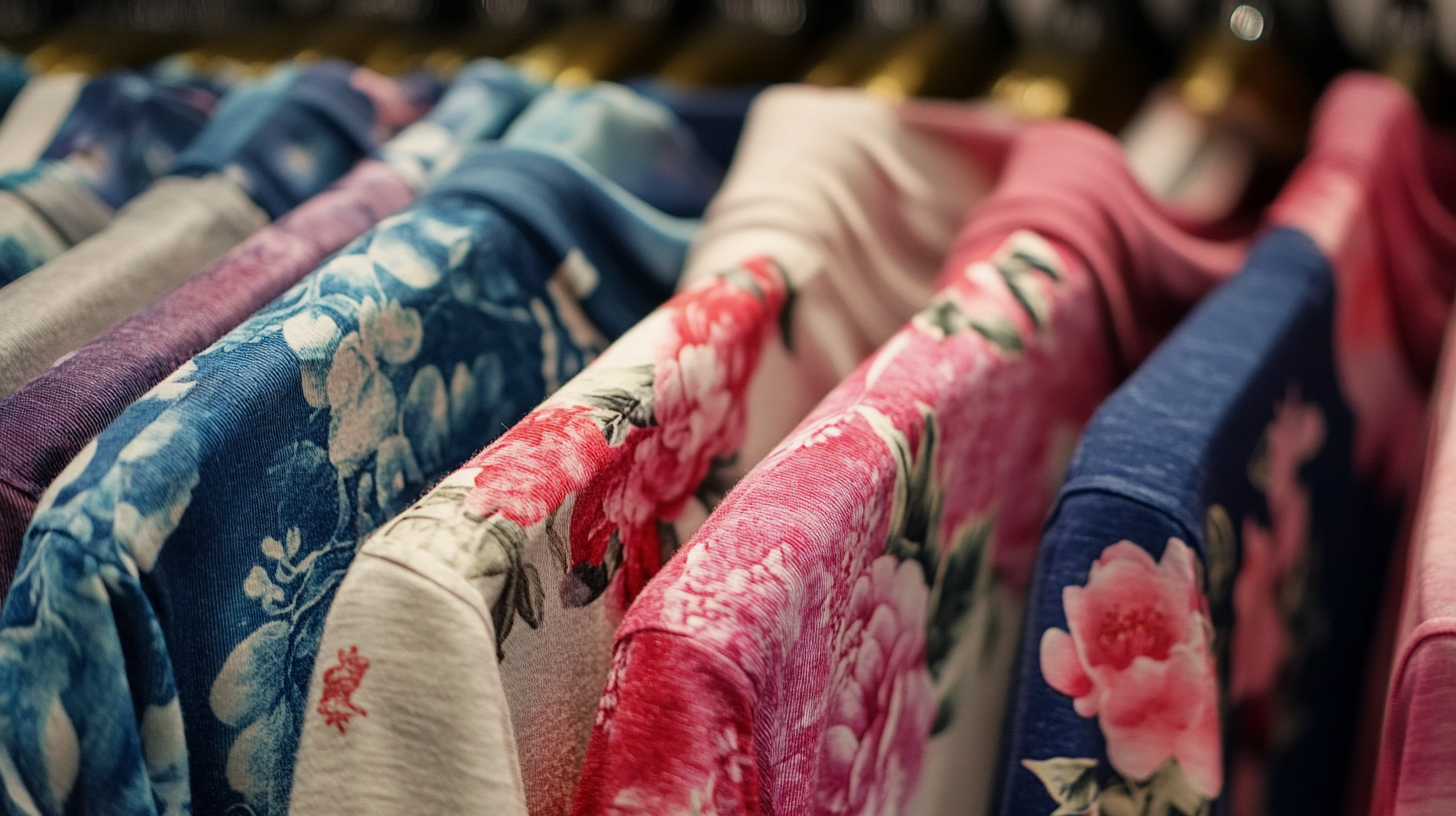Leave Your Message
As trade tensions between the US and China have escalated, particularly with the increase in tariffs, many industries have felt the pressure. However, the T Shirt manufacturing sector in China has managed to thrive despite these economic hurdles. According to a report from Statista, the global T Shirt market is expected to grow to over $200 billion by 2025, with a significant portion of this demand still being met by Chinese manufacturers. In 2021 alone, China accounted for approximately 38% of the world's textile exports, highlighting the resilience and adaptability of its manufacturing capabilities. Furthermore, a study from Market Research Future indicates that the demand for customized and sustainable apparel is surging, with Chinese manufacturers quickly pivoting to meet this trend. This blog will explore how T Shirt manufacturing in China not only endures under rising tariffs but also evolves to cater to the changing landscape of global consumer preferences.

The rising US-China tariffs have posed significant challenges to the T-shirt manufacturing industry, which has increasingly relied on Chinese production due to its efficiency and low costs. According to a report by the American Apparel & Footwear Association, over 90% of the T-shirts sold in the US are imported, with China accounting for nearly 50% of that supply. The imposition of tariffs, which can reach up to 25%, has forced many companies to reassess their sourcing strategies. For instance, the average cost of manufacturing a T-shirt in China has increased by 20% due to these tariffs, squeezing profit margins and prompting businesses to explore alternative markets.
In response to these challenges, manufacturers are turning to innovation and diversification. The Global Apparel Manufacturing Market Report suggests that brands are now investing in automation and technology to minimize production costs. Moreover, shifting manufacturing locations to countries like Vietnam and Bangladesh has become a crucial strategy to mitigate tariff impacts. In 2021, Vietnam's share of US apparel imports increased by 32%, demonstrating the growing trend towards sourcing from countries less affected by these tariffs. As the T-shirt market adapts to ongoing trade policy shifts, manufacturers must remain agile and forward-thinking to maintain competitiveness amidst an evolving landscape.

In the face of rising US-China tariffs, Chinese T-shirt manufacturers have turned adversity into opportunity by adopting innovative strategies to maintain their competitive edge. By leveraging advanced technologies such as automation and AI, these manufacturers have optimized production processes, reducing costs and improving efficiency. This shift not only mitigates the impact of tariffs but also meets the ever-evolving demands of consumers looking for high-quality apparel.
One effective tip for manufacturers is to diversify their supply chains. By sourcing materials from various regions, they can reduce dependency on any single market and mitigate risks associated with tariffs. Additionally, investing in sustainable practices can appeal to a broader customer base that values eco-friendly products, thereby enhancing brand loyalty.
Another strategy involves enhancing direct-to-consumer sales channels. By building robust online platforms, manufacturers can engage with their target audience, cutting out middlemen and increasing profit margins. Utilizing social media marketing can also help to create brand awareness and foster connections with potential customers, allowing for a more tailored shopping experience that aligns with consumer preferences.
In the face of rising US-China tariffs, the Chinese T-shirt manufacturing industry has adapted remarkably, and much of this resilience can be attributed to technological advancements. Automation and advanced manufacturing technologies have significantly enhanced production efficiency, allowing companies to maintain competitive pricing. According to a 2022 report by McKinsey, companies that adopted automation within their production processes saw efficiency gains of up to 30%, which has become a crucial factor in mitigating the impact of tariffs. These advancements not only streamline labor processes but also reduce material waste, thereby maximizing profit margins even in a challenging economic landscape.
Moreover, the integration of data analytics and artificial intelligence in manufacturing has transformed decision-making processes. A report from Statista shows that 70% of manufacturers in China are now utilizing AI to optimize their supply chains and inventory management. This shift towards smart manufacturing enables companies to respond quickly to market demand changes, minimizing excess inventory and reducing costs. As Chinese T-shirt manufacturers continue to embrace these technological innovations, they not only preserve their foothold in the global market but also set the stage for sustainable growth despite escalating trade tensions.
The sustainability practices in Chinese T-shirt manufacturing are gaining traction as the fast fashion model faces increasing scrutiny for its environmental impacts. With rising awareness of the ecological consequences, manufacturers in China are adopting more responsible practices. This shift includes the implementation of regenerative farming techniques, which focus on restoring the health of the land and reducing the reliance on harmful agricultural chemicals. These efforts are a response to the growing demand for transparency in supply chains and a desire to mitigate the environmental costs associated with mass production.
Moreover, Chinese manufacturers are reevaluating their processes to minimize waste and reduce carbon emissions. By streamlining their supply chains and utilizing recycled materials, producers can lessen their ecological footprint while still delivering fashionable apparel. This pivot not only enhances their marketability in an increasingly eco-conscious global landscape but also positions them as leaders in sustainable fashion amidst pressures from rising tariffs and changing consumer preferences. The commitment to sustainability represents a crucial step for the industry to evolve, reflecting a broader recognition of the need for ethical production methods.
The evolving landscape of US-China trade relations presents a unique set of opportunities for growth within the Chinese T-shirt manufacturing sector. As tariffs rise, American companies are compelled to reassess their sourcing strategies, often leading them to explore alternative options outside of traditional suppliers. This shift opens the door for Chinese manufacturers to innovate and adapt, positioning themselves as agile partners capable of meeting diverse needs, from quality to sustainability.
Moreover, the current trade dynamics have prompted manufacturers in China to enhance their operational efficiencies and invest in technology. By embracing automation and smarter supply chain practices, these companies can reduce costs and maintain competitive pricing despite the tariffs. This transition is not merely reactive; it also drives the creation of high-quality products that appeal to a broader international market. In this environment, manufacturers that leverage digital platforms and e-commerce strategies can forge new connections and expand their footprint globally, turning potential challenges into significant growth opportunities.

